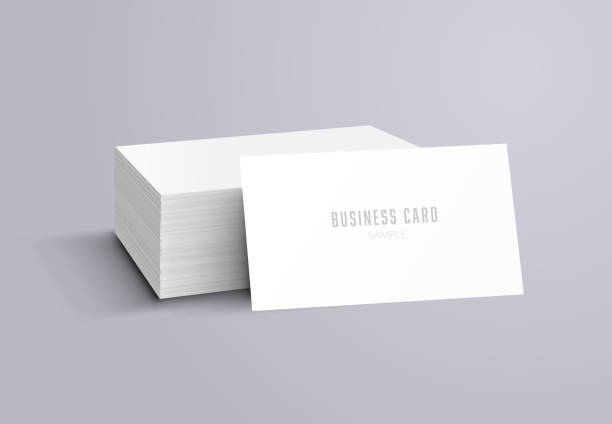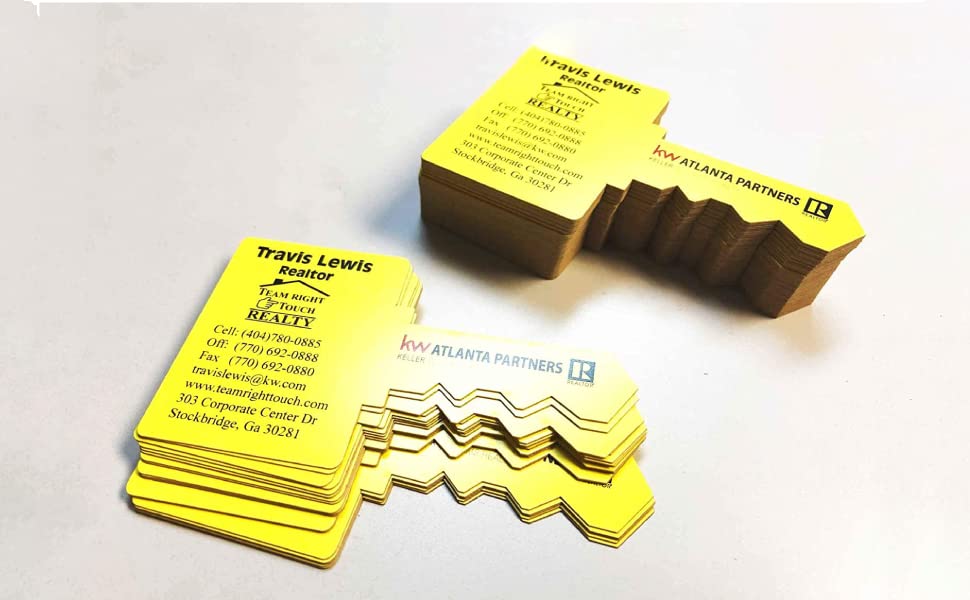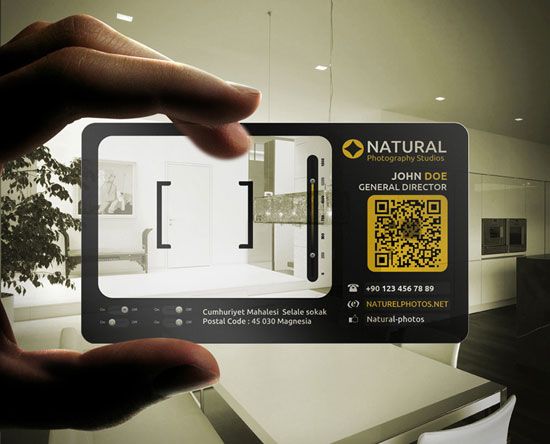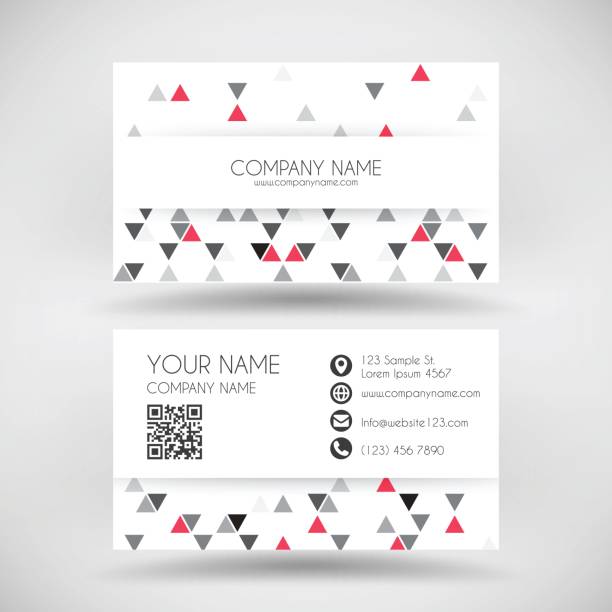
A business card is one of the most important documents every company needs. It is an easy way to connect with potential customers and give your contact information to interested parties.
Many people feel that business cards are becoming obsolete in the age of TikTok, other social media platforms, and digitalization in general, but that’s not the case. Business cards remain relevant in the digital age because they add a personal touch and help companies build a professional image.
This article will examine why business cards remain relevant in the age of TikTok and digitalization.
1. Delivering an excellent first impression
First impressions matter greatly in business. Every business owner or salesperson must know how to grab customers' attention at initial contact, and business cards help achieve this. A well-designed business card catches the eye quickly and makes the recipient willing to engage with your business.
For instance, you’re a cybersecurity software vendor and attend a conference for cybersecurity experts. You meet the technical representative of another software vendor you’d like to partner with. It’s advisable to give the representative a business card with all your contact information, including email address, phone number, and social media handle. If you only tell the representative your social media handle, they can easily forget it later. However, a business card gives the recipient a physical document to refer to.
2. Branding
Business cards are part of your company's unique brand identity. They help establish the brand identity you want to build, including colors, fonts, design, tagline, and corporate logo. Some businesses use unique card shapes and textures to differentiate themselves.
Below is an example of a realtor with a distinctly branded business card. This card is shaped like a key, which is very fitting for a realtor who hands over house keys to renters or buyers. If a realtor gives someone this card, the recipient will likely be amused by the shape and be more likely to read the details. Even if the recipient doesn’t need the realtor’s services in the short term, they’ll likely keep the distinctly shaped card as a souvenir they can refer to later.

Below is another excellent example of a branded business card. This card is shaped like a house, which is apt for a renovation business. Anyone who receives this card will likely be wowed by its unique shape and be more willing to engage with the company.

Business cards contribute greatly to branding, even in the digital age. They help you stand out amid intense competition.
3. Business cards help with referrals
A business card is not just a random document the recipient uses and throws away. It's a physical piece of your brand that the recipient can share with their friends, family, and social circles.
For example, you’re a realtor who gave someone your business card. The person later calls your number, and you help them to find a comfortable home. Because of your excellent service, the recipient can give your business card to another person seeking a home in your area. You’ll get new business based on mutual trust, and referrals can keep coming this way.
A business card makes people more willing to market your business for you. Recipients will be more likely to spread the word about your brand when they have your card than if they only have your phone number or email address.
4. Cost-effectiveness
Business cards are one of the most cost-effective marketing tools for every business. They are cheap to print, whether you order the cards online or from a local printing shop. Countless printing companies allow you to upload your design online and order hundreds to thousands of business cards to your doorstep. If you’re printing at a local shop, you can also do that in bulk.
The printing cost varies depending on the type of paper, but it’s nonetheless affordable. You can find companies printing 500 cards for as low as $10, giving you a low-cost supply of mini ads in your pocket.
5. Business cards signal professionalism
Physical business cards signal professionalism to customers and corporate partners regardless of how digitalized the world has become. It signals that the recipient is valued enough for you to give them something physical to hold. Telling someone your social media handle or email address doesn’t carry the same aura.
Business cards signal to potential customers and partners that you’re willing to make yourself available to them. This signal helps you build productive commercial relationships in the long run.
Elements of a well-designed business card
We’ve discussed why business cards remain relevant in the age of TikTok and other social media platforms. It’s also essential to learn about the elements of a well-designed business card that’ll empower you to build commercial relationships and boost your brand. They include:
1. Business name
Your company name should be clearly stated on the business card. Use a legible and bold font and give it plenty of space. The company name is usually the largest text on the business card so that people can easily remember it. Ensure you spell out the full corporate name.
2. Logo
Your logo is your company's unique brand identity and must be included on the card. The logo visually represents your company and should be proudly displayed on the front of the business card. Use a high-quality logo picture to make it appear sharp when printed on physical paper. Don't add text close to the logo to avoid confusing whoever you give the card to.
3. Personal name & title
A business should include your personal name and job title. This way, someone can easily remember who you are and under what situation they received the card. Some people aren’t good at remembering names but can easily recognize your job title if they need to contact you.
If the business card has ample space, you can add a headshot. Headshots are more common for professions that rely heavily on physical interaction, such as photographers, caregivers, and realtors.
4. Tagline
Most businesses have taglines that summarize their services. Examples include "Landscaping and gardening," "Web design & development," "HVAC installation & maintenance," "Electronics & accessories," etc. The tagline should be included on a business card so that anyone can understand your value proposition at a glance.
5. Contact details
Your business card must include your contact information. This information is the most essential part of the business card because it’s how customers can reach out to you and build long-lasting relationships. Include your email address, phone number, social media handle, and other relevant contact information.
Some businesses have multiple email addresses and phone numbers that all can’t fit into a single business card. In that case, you can include the numbers or email addresses you use most.
6. Physical and web address
Most businesses in this digital age have a website. Include your company's web address in the business card so the recipient can open it if they need further details. Your business card should use the same colors and fonts as your website to create visual cohesion when a potential customer visits your website after seeing the business card.
If you operate an office or brick-and-mortar location, put the address on the business card so a potential customer can visit you for further business talks. If your business has no physical address, no problem– the web address is enough.
7. QR code
A QR code is a creative feature you’d increasingly find on business cards. You can add a QR code that leads to your company's website, a unique landing page, a consultation booking page, or any relevant web page you want potential customers to see. When someone scans the QR code with their camera, they’ll be taken to the web page for further details.
A QR code can be handy if you run out of space on your business card. You can add it to the back of the business card to provide extra information.

8. Call-to-action
Your business card can have text directing the recipient to take a specific action. It can say, "Email us today," "Contact us for more information," "Visit our office today," "Visit our website," or anything else you want potential customers to do. A call-to-action button helps drive engagement from the people you give the cards to. When the recipient is sure of the action you want them to take, they're more likely to respond and start building a commercial relationship.
Tips for designing a business card
1. Make it easy to read
Use bold and legible fonts to make it easy for anyone to read the card’s details. Avoid stylish fonts that only serve an aesthetic purpose. It's advisable to use the Arial and Times New Roman fonts. If the card contains a lot of information, ensure the text is large enough for an average person to read.
We talked about including a QR code on a business card. If your required text goes beyond the available space on the card, you can cut some out and include a QR code at the back to direct the recipient to your website for more information.
2. Proofread before printing
Any little mistake on a business card can make you look unprofessional. Hence, always proofread the card details for grammatical and spelling errors before printing them. Ensure the contact information is correct, as an omitted figure or letter can lead the customer to the wrong place and cause you to lose money.
3. Leave enough spacing
Leave sufficient blank space between text and graphic elements. A well-spaced card is easy to read and helps draw the recipient's attention to important details. Some people also jot down notes on business cards, and the spacing helps them do it.
The text on the card should be at least 5mm from the edge of the trim. The font should be at least 8pt– anything below this size might not print well on paper.
4. Use consistent colors
The business card should be based on your brand identity. Use the same colors, fonts, and graphics that people associate with your business. Hence, if someone opens the website or landing page they find on the card, they’ll be sure they’re interacting with the right company.
5. Use high-quality material
Every business card is only as good as the material it is printed on. No matter how well-designed and detailed your card is, printing it on inferior material makes it lackluster. Clients can sense when a business card is printed on substandard material, and it can make them disregard your business. “If a company can’t invest in a high-quality business card, why should I trust them to deliver good work?” is a typical thought pattern.
Ensure your card is printed on high-quality paper. Some people print their cards on plastic or metal, but paper is okay. Fortunately, you can choose from a broad range of paper materials.

What material should I print my business card on?
Business cards are generally printed on five kinds of paper, including:
- Cardstock: This paper weighs around 80 to 110 pounds per ream (500 identical sheets). It is thick and can withstand excessive handling, making it ideal for business cards you expect people to pass around and keep for long periods.
- Matte stock: This paper type has a non-shiny yet smooth finish. It gives business cards an expensive feel, making it ideal for companies catering to high-end clients. You can write on a matte stock card, which is helpful if you're prone to writing messages on business cards.
- Photo card stock: As the name suggests, this stock gives your business card a photo-quality finish. It's ideal for cards on which you'll print headshots.
- Glossy stock: This paper has a shiny appearance and displays colors excellently. It's ideal for business cards with many graphic elements.
- Textured: This paper is shiny and has texture pressed into it to give a unique feel, such as a basket weave. The texture makes the card look elegant.







